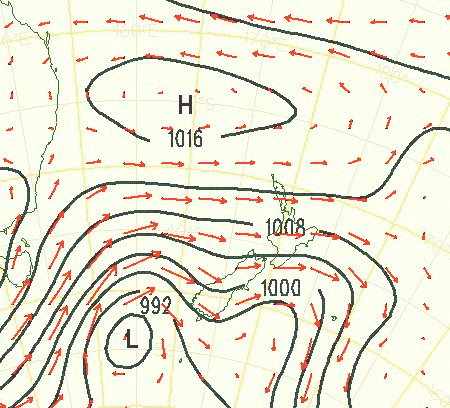|
Here are some easy wind tips:
1. Winds blow almost directly (but not quite) along the isobars.
In the Southern Hemisphere the flow is CLOCKWISE around LOWS and COUNTER-CLOCKWISE around HIGHS.
In the Northern Hemisphere it is the
other way around! 2. The closer the isobars, the stronger the winds. If you see lots of isobars drawn very close together, it is likely to be very windy. If they are a long way apart, it will be fairly calm.
In the picture to the right, the wind direction is given by the red arrows. The longer arrows are for stronger winds. Notice how the stronger winds are where isobars are closer. |
 |